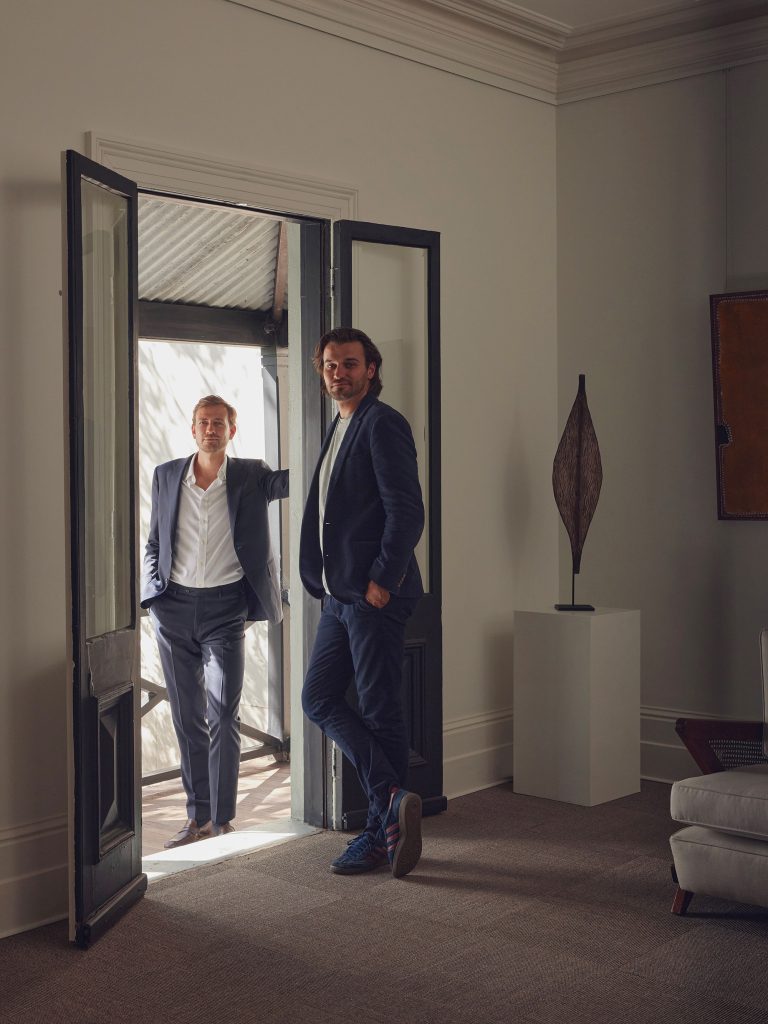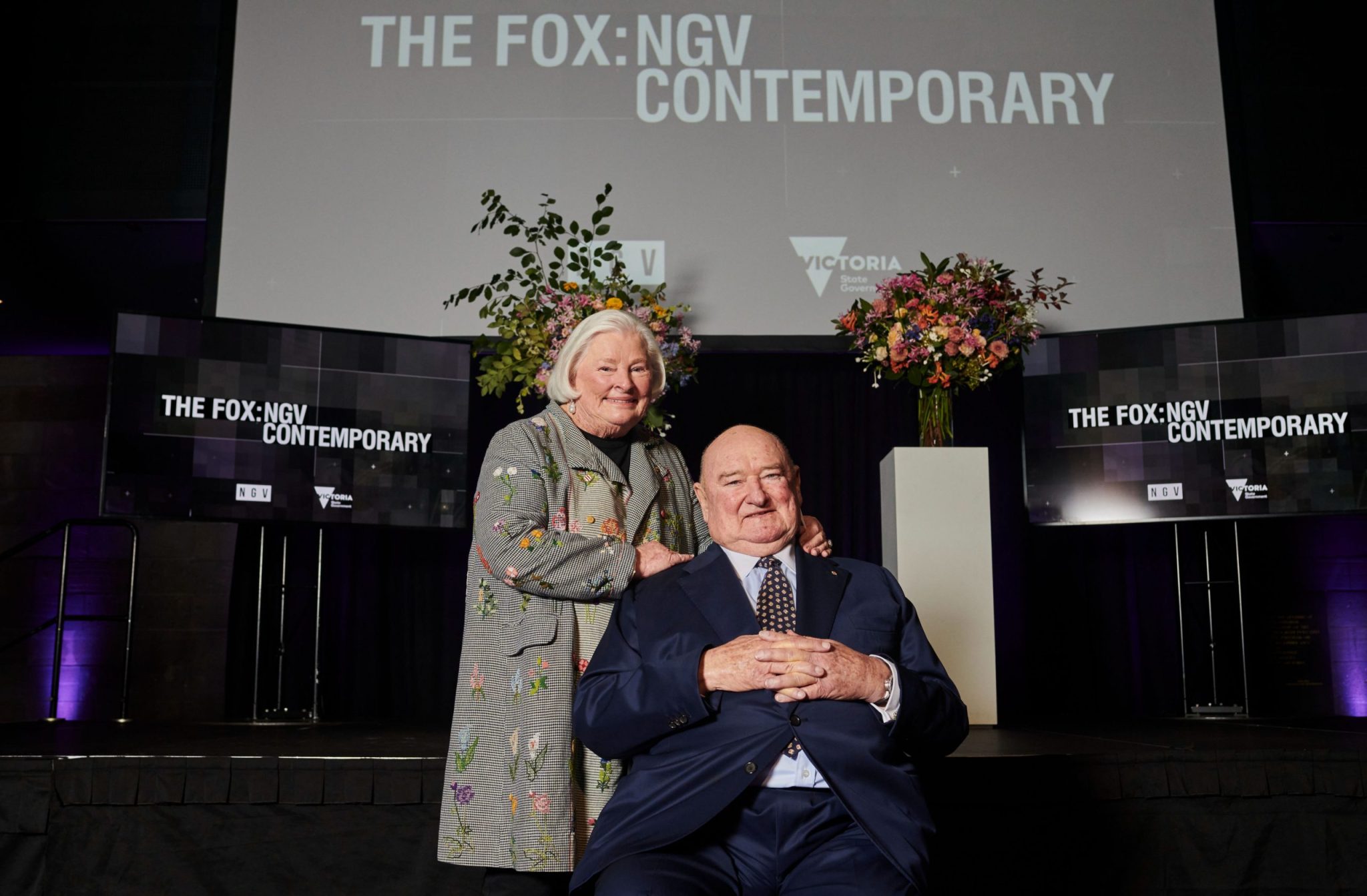
It’s about context: A Secondary Eye offers an intimate art viewing experience in their new Sydney gallery
It’s about context: A Secondary Eye offers an intimate art viewing experience in their new Sydney gallery
Share
Ascending the stairs of a historic building in the arts precinct end of Woollahra’s Queen Street, you’ll find the new home of A Secondary Eye. Nestled amongst verdant established trees and surrounded by multi-million dollar homes and some of Sydney’s leading galleries, A Secondary Eye’s new space has been described as ‘the best private viewing room in Sydney’.

Co-founded in 2020 by Jesse-Jack De Deyne, a specialist with extensive experience working in the secondary market for Australian Indigenous art, and Boris Cornelissen, former contemporary art specialist at Sotheby’s London and Hong Kong, the gallery has been many years in the making and presents an exciting alternative to auction houses for collectors and art lovers alike.
For De Deyne and Cornelissen, A Secondary Eye is far more than an alternative to auction houses. Their focus is on further developing the secondary market for art and collectibles in Australia and contextualising the work of significant and important Australian artists in a way that elevates them to the forefront of art collectors’ consciousness.

Redefining what a gallery can be
Recognising context is everything, the new gallery space has been consciously designed to read more like an elegantly renovated Victorian manor home than a stereotypical white cube gallery, or mass turnover auction house.

“Before we took over this space it was a naturopath’s studio,” De Deyne says. “There were partition walls bisecting the space. Our vision was to strip it right back, returning it to the way the room would have been over 150 years ago, with some modern improvements such as gallery lighting and hanging system.”

The result is a quiet, refined gallery that strikes a perfect balance between pristine white walls, high ceilings and expertly placed directional lighting to highlight each artwork, and a welcoming, perhaps familiar, domestic feel.
“Light is an essential aspect to consider when showcasing art,” De Deyne explains. “In this new space, we have a north-facing wrap-around balcony with three sets of French doors opening towards the streetscape. In the afternoon, the light filters through the trees giving the works a completely different quality.”
While the gallery may not be a large-scale slick concrete cube that has become synonymous with fine art and dealer galleries, the intimacy of the space allows the works and the stories of the artists to shine. It’s a space designed for contemplation and encounters with art that feels special and human.

Presenting an artist’s story to elevate the experience
Humanising art through telling the artist’s story and amplifying the contribution of potentially overlooked names in Australian art is another important element of De Deyne and Cornelissen’s philosophy. “In a typical auction house setting, there could be 150 lots in each auction. Each work is another unit,” De Deyne says. “At A Secondary Eye, we try to build an appreciation of the artist and the work. We’re uniquely placed to do this at the gallery because we run a six-week presentation. We also produce publications for each exhibition, commissioning art historians and contemporary arts writers.”

In a bold move, as is necessary for the opening of a new gallery space, De Deyne and Cornelissen presented the first solo exhibition of Rover Thomas’s work in more than 20 years. Described as a “heavy-weight of contemporary Australian art” by De Deyne, the gallery’s inaugural show presents works created from the 1980s and 1990s, the majority of which have never been shown to the public before. “The fact that this is the first solo Thomas exhibition in Sydney in so long is ridiculous given how big of an impact and standing he had” De Deyne says.

Thomas is viewed as the founding figure for what became known as the East Kimberley School. In 1990, he was the first Indigenous artist to represent Australia at the Venice Biennale, alongside Trevor Nickolls. Thomas had a unique ability to powerfully combine ancestral stories and portrayals of indigenous life with thoroughly modern abstractionist concepts and schemes, and it was this combination of talent and skill that garnered international recognition.

Despite this international recognition and success, Thomas is not a well-known household name among the wider Australian cultural consciousness. In part, De Deyne and Cornelissen see themselves and the gallery as champions working to change this. Given the fact that the influence of Thomas’s work — which incorporated heavy use of natural earth pigments and bold traditional patterns expanded in scale and fused with modern geometric abstraction— continues to greatly influence the aesthetic of Australian contemporary painting to this day, it’s easy to see why the pair have taken on the challenge.

A Secondary Eye does not exclusively present the work of indigenous artists. Their next show, which is still under embargo, will present the work of a well-known non-indigenous Australian artist. While the work presented in the next show may be completely different in form, style and subject matter, the ethos of contextualisation and presenting significant works in an intimate setting to bring people closer to the experience of art will no doubt remain.
Launching the gallery with a solo Thomas show — a “bold, bullish move” as De Deyne puts it — meant too that it was “imperative” to make sure that the quality of works was there. “We reached out to our collector network to secure works to present, which weren’t for sale, but were essential moments in Thomas’s career and therefore critical for the exegesis of the show,” De Deyne says. “We were very honoured to be able to have them on the walls because we see a role in what we do as being equal parts commercial and cultivating a deeper understanding of the depth and breadth of Australian indigenous art.”
You Might also Like



















